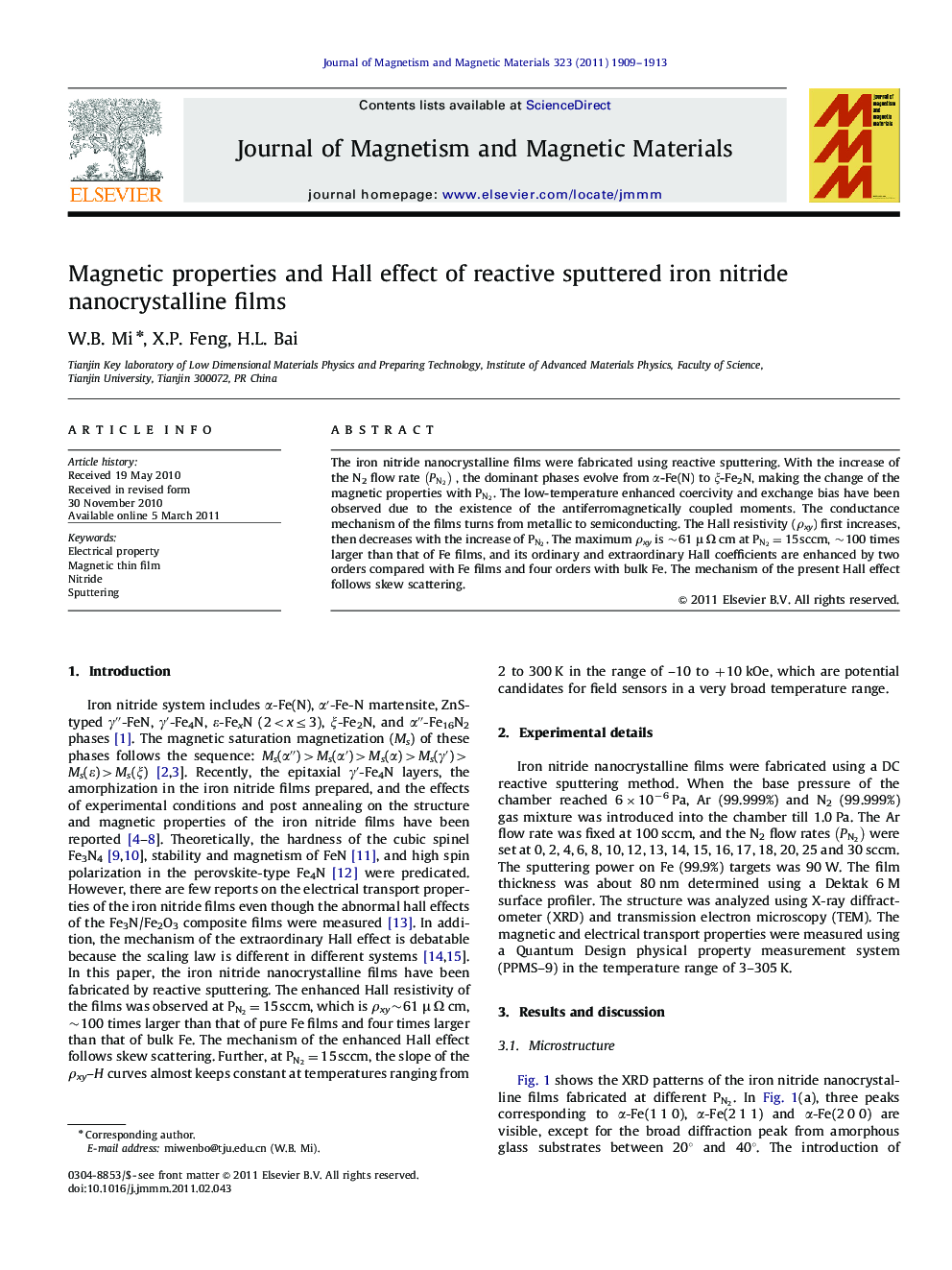| Article ID | Journal | Published Year | Pages | File Type |
|---|---|---|---|---|
| 1800561 | Journal of Magnetism and Magnetic Materials | 2011 | 5 Pages |
The iron nitride nanocrystalline films were fabricated using reactive sputtering. With the increase of the N2 flow rate (PN2)(PN2) , the dominant phases evolve from α-Fe(N) to ξ-Fe2N, making the change of the magnetic properties with PN2PN2. The low-temperature enhanced coercivity and exchange bias have been observed due to the existence of the antiferromagnetically coupled moments. The conductance mechanism of the films turns from metallic to semiconducting. The Hall resistivity (ρxy) first increases, then decreases with the increase of PN2PN2. The maximum ρxy is ∼61 μ Ω cm at PN2=15sccm, ∼100 times larger than that of Fe films, and its ordinary and extraordinary Hall coefficients are enhanced by two orders compared with Fe films and four orders with bulk Fe. The mechanism of the present Hall effect follows skew scattering.
► On increasing the N2 flow rate, the dominant phases evolve from α-Fe(N) to ξ-Fe2N. ► The conductance mechanism of the films turns from metallic to semiconducting. ► The maximum ρxy is ∼61 μ Ω cm at PN2=15sccm, ∼100 times larger than that of Fe films. ► The mechanism of the present Hall effect follows skew scattering.
